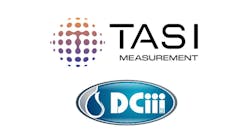The Department of Energy’s Industrial Technologies Program (www1.eere.energy.gov/industry/) is preparing for Round 2 of its Save Energy Now campaign, continuing its efforts to help U.S. industry identify potential energy and cost savings opportunities. Round 2 will offer expanded assessments for plants, including system evaluation for pump, compressed air, fan, and motor systems (in addition to steam and process heating), and cost-shared opportunities. An additional 250 Energy Savings Assessments (ESA) will be offered in 2007; applications will be accepted beginning October 1, 2006. Further announcement will be provided on Round 2 of the program on the Save Energy Now Web site (www1.eere.energy.gov/industry/saveenergynow/) in the coming months.
For background on the Energy Savings Assessment program, the Industrial Technologies Program is providing the following short Q&A.
Question: What is an ESA?
Answer: An ESA is an up to three-day review by a DOE Energy Expert who works in partnership with your energy managers and their staff to evaluate your plant systems, using DOE Software Tools. The expert and your staff use the tools to identify areas for potential energy savings. The result is a report that details recommendations for improvement. The ESA is key to identifying savings opportunities, which can then evolve into a strategic, long-term energy management business plan.
By the end of this year, 200 ESAs will be completed. To date, the Save Energy Now effort has resulted in 93 energy savings assessments, which have identified 26.6 trillion Btu per year in natural gas savings and total potential annual energy cost savings of $246 million. Eleven plants have reported more than $1.8 million in immediate savings, achieved in the first 30 days following the assessment (details on results).
Question: How can an ESA benefit my plant?
Answer: Energy efficiency makes good business sense. Improved energy savings, production, and reliability through implementing new technologies and energy management practices translates into increased profits for the individual plant. On the national level, energy efficiency contributes to a healthier environment by reducing emissions and decreases waste and dependence on foreign energy sources. In addition to finding substantial energy savings, an important benefit of an ESA is the training that plant personnel receive in using DOE Software Tools to help them identify even more energy savings opportunities.
Visit the Resources Web site to order your Save Energy Now CD, access other technical resources to help you optimize your plant systems, and sign up to partner with ITP.

